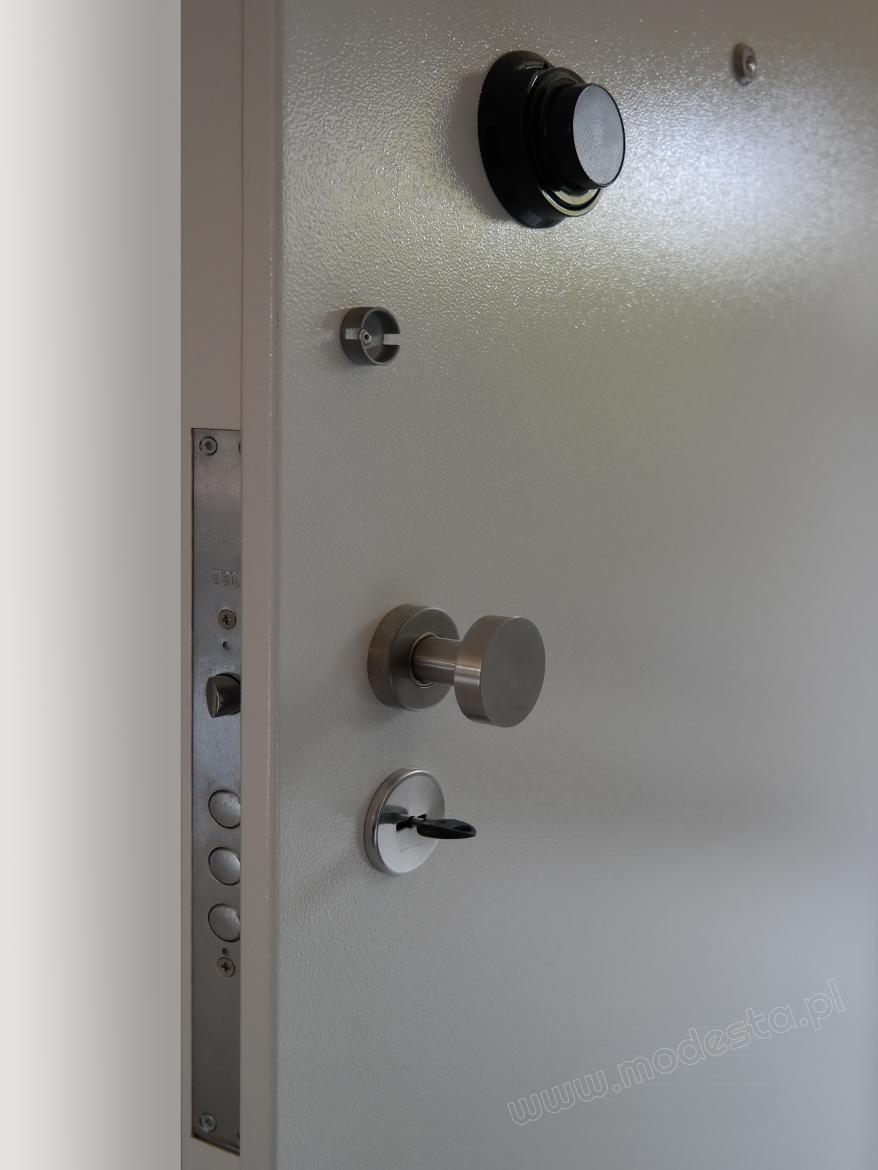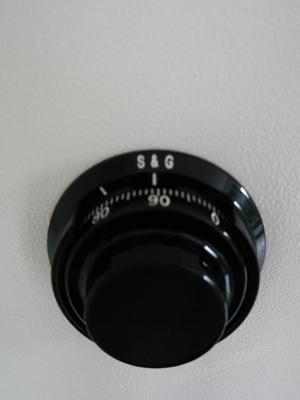doors for security offices
Doors for security offices are specialist products intended for closing the rooms in which the confidential information are created, registered, processed, retained, and circulated. The construction of doors and their equipment provides access to the office rooms only to authorised persons and a high level of protection against burglary and sabotage. Secret office doors are constructed on the basis of steel doors of high burglar resistance class RC4 with additional accessories that meet the requirement being established by the confidential information protection system as well as proper laws and ministerial decrees.
RC4 Doors for security office
is a construction with a high level of protection against burglary. A door leaf with the total thickness of 65 mm with a three-sided thick rabbet is made of galvanized steel sheet. The thickness of sheathing of doors for security offices is 2.0 mm - it guarantees perfect stiffness of a door board, resistance to static and dynamic loads, as well as to the tests of drilling, bending, and bowing the doors. A door leaf for RC4 secret office doors is reinforced internally by steel profiles filled in with mineral wool panels, and it is placed between the reinforcement and the sheathing of the door leaf. The door frame of RC4 doors is made of galvanized steel of 3.0 mm thickness with a three-sided rabbet and EPDM gasket. The lower edge of the door frame is finished with a threshold made of a steel section of 20 mm height. The door leaf is mounted on the frame by three, three-part bearing hinges and it is welded to the door frame and door leaf.


The locking system of security office doors
is based on rotating bolts in the lock and permanent bolts on the surface of hinges. After closing, the door leaf is firmly locked in the door frame on its four edges by means of a multiple locking spreader lock and permanent anti-burglary bolts, Ø18 embedded in the rabbet of the leaf in the axis of the hinges. The main lock is certified as 7 in the class protection in accordance with PN-EN 12209:2005, except the bolt, it has a latch that opens by a split spindle, it is equipped with an anti-burglary cylindrical insert of class -6- with a set of duplicate keys on the basis of a code card. The locking mechanism is blocked by an additional code lock in -B- class in accordance with PN-EN 1300:2002, which is resistant to reaming and radiological attack. The three-disc locking mechanism of the code lock with a silent run has the tolerance on positioning < 1 of the graduation. The lock knob has the scale of 100 graduation marks with a scale reading. Inside the doors of security offices, in the sheathing of a door leaf, an inspection hole for keys to change the combination of the code lock is made. In practice, an additional code lock is mounted above the main lock, and it blocks the tie rod of an upper bolt of the main lock. The door leaf is equipped with a fitting: handle-handle or handle-knob made of stainless steel on a safety escutcheon plate protecting the insert of the main lock against penetration and drilling.
RC4 Security office doors
have the parameters of protection described by the standard PN-EN 1627:2012, and they meet the requirements defined in the Regulation no. 57/MON the Minister of National Defence of 16 December 2011 on the particular way of organization and functioning of the security offices and other organizational units being responsible for confidential information processing, method and mode of confidential information processing, as well as the selection of application of physical security measures (Journal of Laws from MON [Ministry of National Defence], no. 25, item 402 of 31.12.2011). The doors meet the requirements of Regulation no. 46/MON [Minister of National Defence] of 24 December 2013 on the particular way of organization and functioning of the cryptographic offices (Journal of Laws from MON [Ministry of National Defence], item 401 of 30.12.2013). The construction and equipment of the doors also correspond to the Regulation of the Council of Ministers of 1 June 2010 on the organization and functioning of the security office doors Journal of Laws of 2010, no. 114, item 765).
Anti-burglar security office doors
provide the protection of confidential information, allowing the access only for authorized persons. Two-sided sheathing of the door leaf by the sheet steel of 2.0 mm thickness and the internal reinforcement constitutes an effective barrier for cutting out and bowing the door board. The locking system makes forced opening of the door leaf or removing it after cutting the hinges more difficult. A very effective element of protection is a code lock, which has a high level of resistance to professional ways of opening by unauthorized persons who are equipped with advanced tools and have expert knowledge and abilities. In accordance with the requirements that are established in relation to the protection of security office doors, the code lock should be able to resist a test of manipulative and destructive unlocking for a period of 20 working hours by means of a set of professional power tools used by a specialist. Apart from the protection against destruction and perforation, the code lock is also protected against a radiological attack, and its coating is made of the material that prevents scanning of the mechanism and revealing code combination.
Additional equipment for security office doors.
Depending on the requirements concerning the projects of security office doors, they may be equipped with various, additional elements. The most frequently used are the elements of access control:
- electric door strikes
- electromagnetic bolts with a sensor of bolt positioning
- electromagnetic jumpers mounted on the upper edges of the door leafs
- reed relays Grade-3
Other elements of the additional equipment of the security office and cryptographic doors are: door closers, additional bolt locks, viewfinders, and sets for sealing the doors.
RC4 Doors for security offices are manufactured in both dimensions: standard and non-standard. The door leafs and frames are painted in the RAL palette colours.
special application doors
X-ray lead lined doors
_______________________________
server room doors
_______________________________
transformer station doors
_______________________________
doors for weaponry warehouses
_______________________________
secret office doors
_______________________________
doors to the archives of deposit
_______________________________
vault doors
